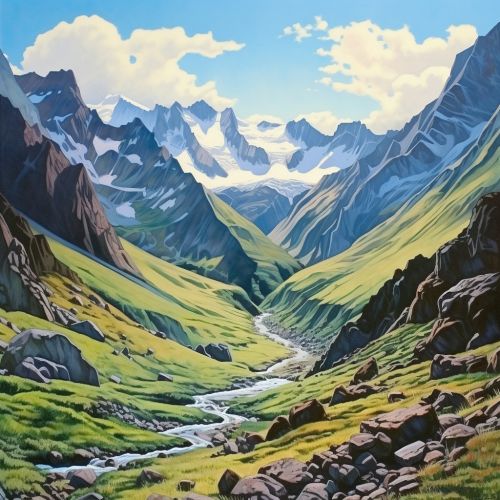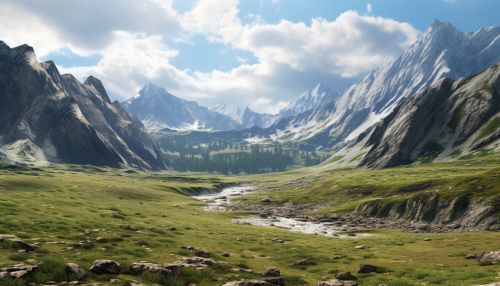Cirque
Definition
A cirque is a term derived from the French word for "circus", but in the context of physical geography, it refers to a bowl-shaped, amphitheater-like depression eroded into the side or head of a glacier valley. Typically, a cirque has a lip at its lower end. The term is used in the field of glaciology to describe these specific landforms.
Formation
Cirques are formed through a process known as glacial erosion. This process begins when a glacier forms in a high mountain corrie, or hollow, where snow accumulates. Over time, the weight of the accumulated snow compresses into ice, which slowly begins to move downhill under the force of gravity. This movement, combined with freeze-thaw weathering, erodes the rock and deepens the hollow, creating a cirque.


Characteristics
Cirques are characterized by their concave, bowl-like shape. They are typically open on the downhill side, while the uppermost slopes are steep and concave. The floor of a cirque is usually flat, and may contain a small lake known as a tarn. The back wall of a cirque, known as the headwall, is usually a cliff-like slope, which is the result of extensive erosion and the collapse of the hanging valley wall.
Examples
There are numerous examples of cirques around the world. In North America, notable cirques include the Tuckerman Ravine in New Hampshire and the Blackfoot Cirque in Glacier National Park. In Europe, the Gavarnie Cirque in the Pyrenees is one of the most famous, while the Eiger's North Face in Switzerland is also a well-known cirque. In the Southern Hemisphere, the Earnslaw Burn in New Zealand's South Island is a notable example.
